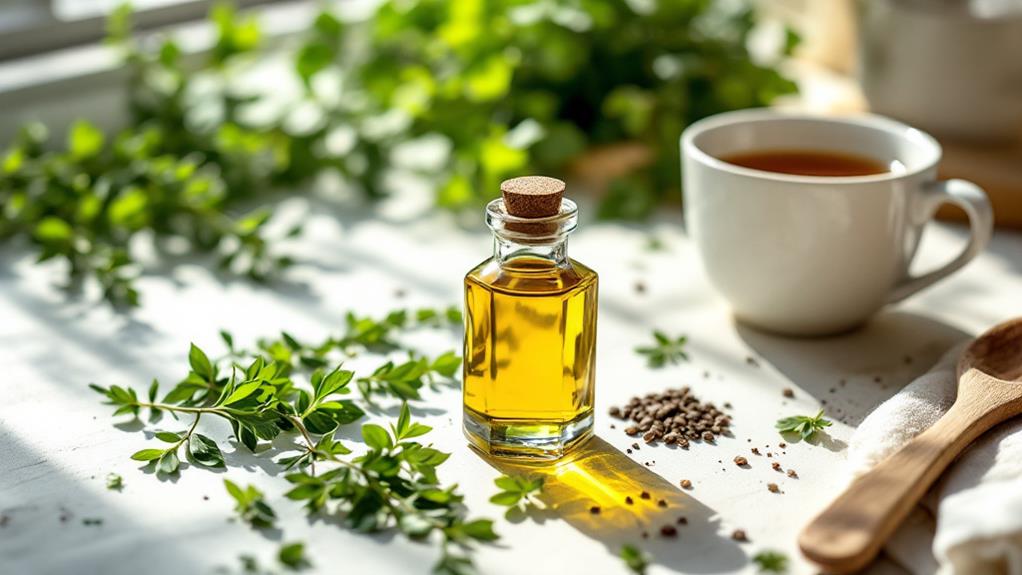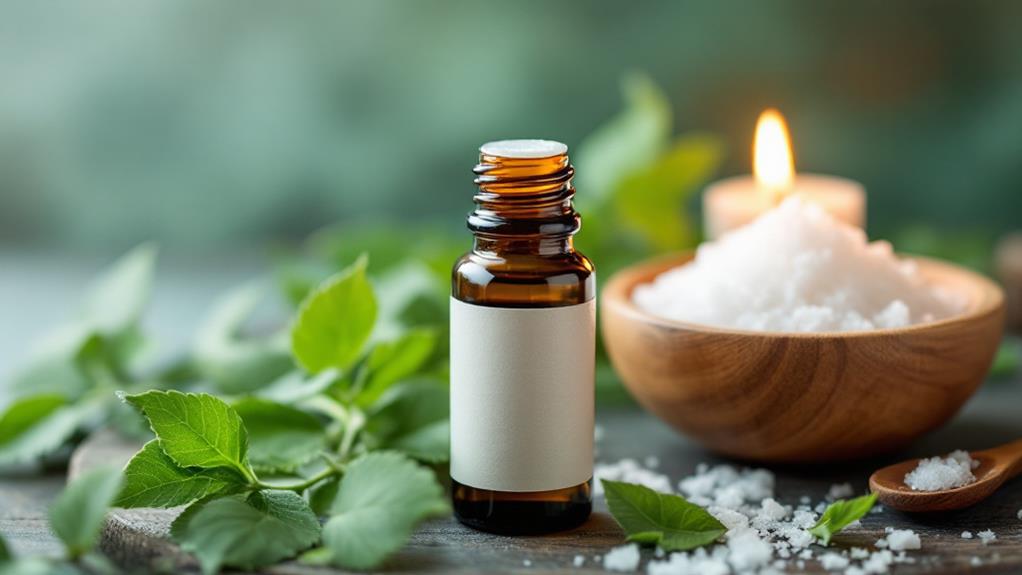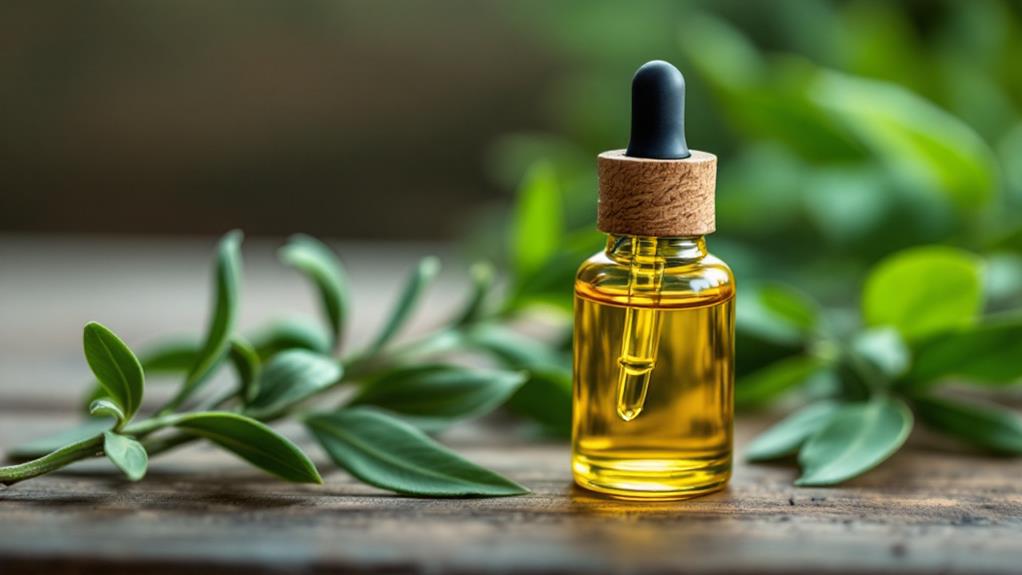How to Use Tea Tree Oil for Razor Bumps: Natural Skincare Tips
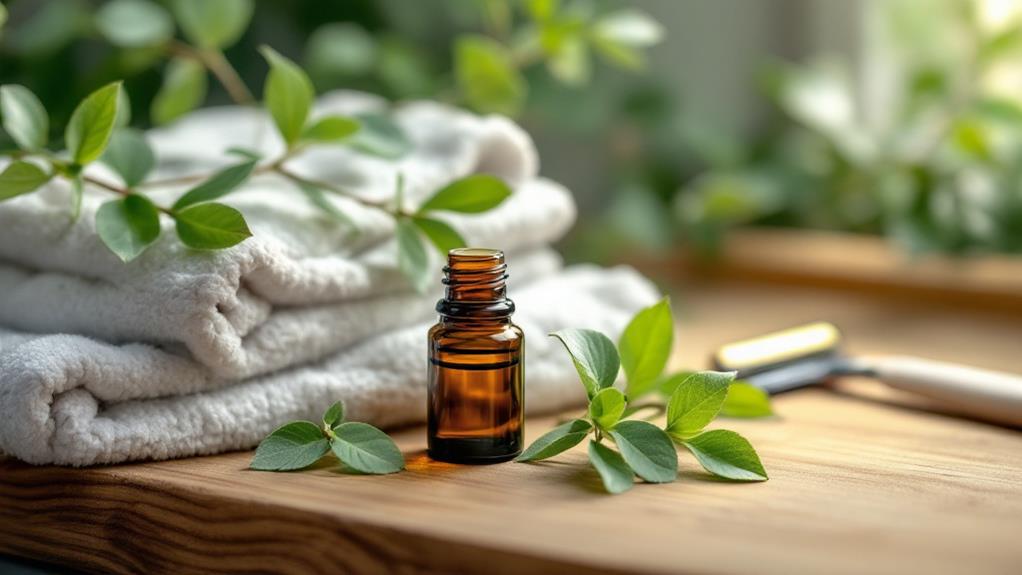
To tackle razor bumps using tea tree oil, start by diluting it with a carrier oil like coconut or jojoba. Mix 1-2 drops of tea tree oil with about a teaspoon of the carrier oil. Always perform a patch test on a small area to verify there's no adverse reaction. Apply the mixture gently with a clean cotton swab or your fingertips to the affected area twice daily. This natural remedy helps reduce irritation and prevents ingrown hairs by keeping the skin clean. If you want to uncover more soothing skin solutions, there's more to investigate.
Understanding Razor Bumps
Razor bumps are a common issue, especially if you've got coarse or curly hair. These pesky red bumps, also known as ingrown hairs, occur when hair grows back into the skin after shaving. This often leads to inflammation and discomfort, particularly in areas like the face, neck, and bikini line. If you're prone to these bumps, it's vital to understand how to manage and prevent them effectively.
Proper shaving techniques are your primary line of defense. Always shave in the direction of hair growth and use a sharp, clean razor. Regular exfoliation can help too, as it removes dead skin cells that trap hair beneath the surface. Keeping your skin moisturized is similarly significant. Hydrated skin is less likely to become irritated, reducing the chances of razor bumps forming.
For those with coarse hair, these steps are even more fundamental. The curlier your hair, the more likely it is to curl back into the skin, causing painful ingrown hairs. While tea tree oil can be a beneficial supplement to your skincare routine, focusing on these preventative measures will help maintain healthy skin and minimize the occurrence of razor bumps.
Benefits of Tea Tree Oil
Tea tree oil steps up as a powerful ally in combating razor bumps, thanks to its impressive antimicrobial, antibacterial, and anti-inflammatory properties. Derived from the leaves of the Melaleuca alternifolia tree, tea tree oil effectively targets skin irritations, offering relief from the discomfort of razor bumps. Its antimicrobial properties help cleanse the skin, reducing the risk of infection and further irritation. Moreover, the anti-inflammatory nature of tea tree oil can greatly decrease redness and swelling, soothing the skin and alleviating symptoms associated with ingrown hairs.
Incorporating tea tree oil into your skincare routine can offer several benefits:
- Alleviates skin irritation by reducing redness and inflammation.
- Prevents ingrown hairs by keeping the skin clean and pores unclogged.
- Acts as a natural remedy, offering a chemical-free alternative to conventional treatments.
- Enhances skin health when used regularly, minimizing future razor bumps.
- Safe application when diluted with carrier oils like coconut or jojoba oil, reducing the risk of irritation.
Proper Application Techniques
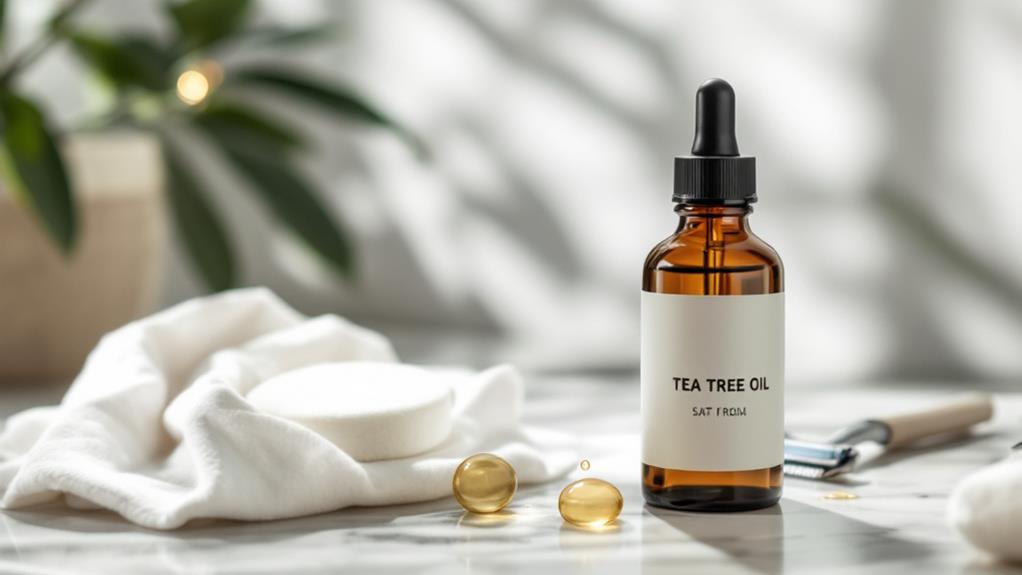
When incorporating tea tree oil into your skincare routine, it's vital to apply it properly to improve its benefits and prevent irritation. Initially, always dilute the tea tree oil before use. Mix 1-2 drops of tea tree oil with a teaspoon of a carrier oil like coconut or jojoba oil. This dilution is significant to prevent skin irritation while addressing razor bumps effectively.
Before applying the mixture to a larger area, conduct a patch test on a small section of your skin to verify there's no allergic reaction. Once you're confident it's safe, use a clean cotton swab or your fingertips to apply the diluted oil directly to the affected area. Avoid excessive rubbing, as this might further irritate your skin.
For peak results, apply this spot treatment twice daily—in the morning and evening. This routine will help reduce inflammation and promote healing of those pesky razor bumps. Remember to store your tea tree oil in an airtight container away from direct sunlight to maintain its effectiveness over time. By following these proper application techniques, you'll be on your way to smoother, bump-free skin.
Safety Precautions
While proper application improves the benefits of tea tree oil, ensuring safety is likewise significant. Begin by diluting tea tree oil with a carrier oil like coconut or jojoba oil. This step is vital to prevent skin irritation during topical application. Before using the oil on larger areas, conduct a patch test on a small portion of your skin to check for any allergic reactions. This precaution helps identify potential issues without widespread discomfort.
Here are some further safety precautions to take into account:
- Avoid excessive use, as too much tea tree oil can cause skin dryness.
- If you notice any itching, redness, or irritation, wash the area immediately and stop using the oil.
- Never apply tea tree oil to broken skin or ingest it, as it is toxic when not properly diluted.
- Use moderation in application; don't treat it like a lotion to avoid adverse effects.
- Keep tea tree oil out of reach of children and pets to prevent accidental ingestion.
Alternative Treatments
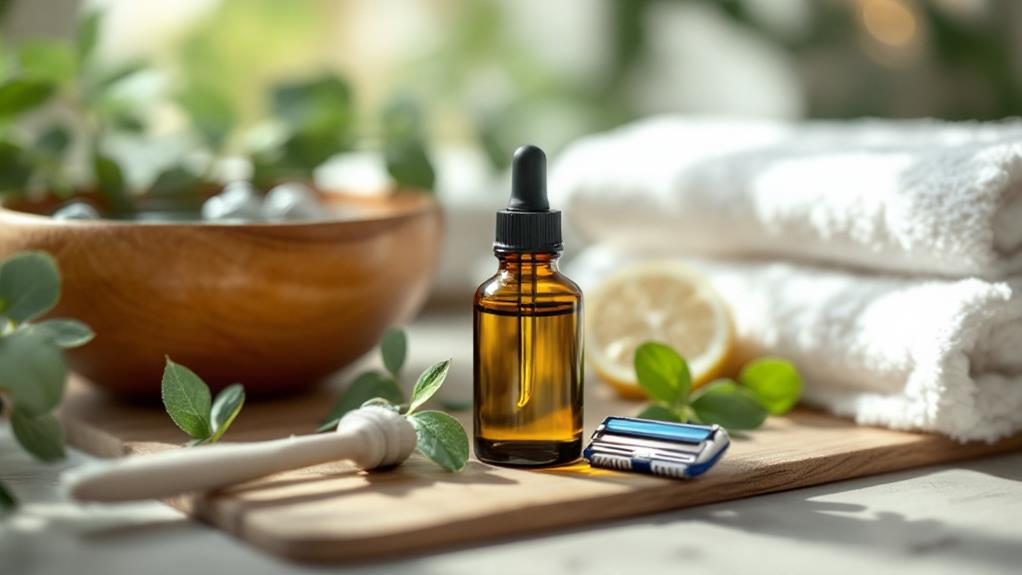
If you're looking for alternative treatments to tackle razor bumps, there are several effective options to contemplate. Aloe vera is a fantastic choice with its soothing and hydrating properties. Apply it directly to the affected areas to calm irritation and promote healing. Another natural remedy is witch hazel. As a natural astringent, it reduces inflammation and provides relief from discomfort, making it a go-to for many dealing with razor bumps.
For more targeted treatment, consider hydrocortisone cream (1%). This over-the-counter solution effectively reduces redness and swelling without the irritation risk associated with crucial oils. If you're interested in chemical exfoliants, salicylic acid and glycolic acid are worth exploring. They prevent clogged pores and encourage normal hair growth, which helps minimize razor bumps.
Natural remedies like German chamomile, lemongrass, and lavender crucial oils also offer skin benefits. Their unique anti-inflammatory and soothing properties can be excellent alternatives to tea tree oil. Each of these options provides a different approach to managing razor bumps, so you can choose what best suits your skin's needs. With these alternatives, you're sure to find a method that offers relief and supports your skin's health.

